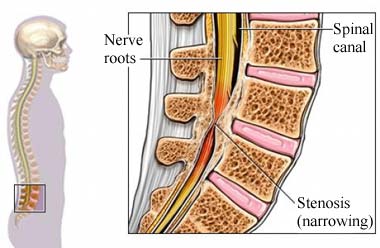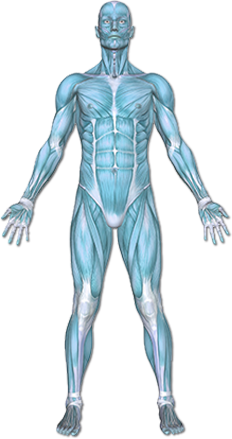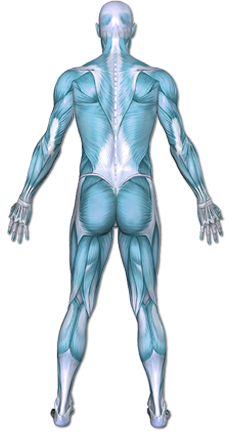Spinal Stenosis
Spinal stenosis is a narrowing of the spinal canal. The spinal canal is located in the backbone. It is a small space that holds the nerve roots and spinal cord. If this space becomes smaller, it can squeeze the nerves and the spinal cord. This causes pain and other symptoms. Stenosis can occur anywhere along the spinal cord. It is most common in the low back (lumbar) region.


Copyright © Nucleus Medical Media, Inc.
This content was created using EBSCO’s Health Library
Some people are born with narrowed canals. Most often stenosis is a result of aging. Conditions that can cause spinal stenosis include:
- Osteoarthritis and osteophytes (bony spurs) associated with aging
- Rheumatoid arthritis
- Spinal tumors
- Trauma
- Paget’s disease of the bone
- Previous surgery
This content was created using EBSCO’s Health Library
Factors that increase your chance of spinal stenosis include:
- Being born with a narrow spinal canal
- Age: 50 or older
- Previous injury or surgery of the spine
This content was created using EBSCO’s Health Library
Symptoms include:
- Numbness, weakness, cramping, or pain in the legs and thighs
- Radiating pain down the leg
- Abnormal bowel and/or bladder function
- Decreased sensation in the feet causing difficulty placing the feet when walking
- Loss of sexual function
- Partial or complete paralysis of legs
This content was created using EBSCO’s Health Library
Your doctor will ask about your symptoms and medical history. A physical exam will be done. Images may be taken of your bodily structures. This can be done with:
- Ultrasound
- X-ray
- CT scan
- MRI scan
This content was created using EBSCO’s Health Library
Your therapist will educate you on pain-relieving techniques, such as ice and decreasing or modifying painful activities. This diagnosis often occurs from muscular tightness or weakness which causes your posture to get out of alignment. Years of activity with poor posture can lead to damage to the structure of the spine. Your therapist will educate you on proper stretching and strengthening exercises for the back. They may perform hands on, manual therapy techniques to further increase your joint flexibility. The final phase of rehab will involve strengthening during functional activities and education to prevent the injury from recurring. If surgery is needed, your therapist will work with you to regain your strength and range of motion through education, exercise, and manual therapy. They will teach and train you to perform functional activities with proper strength, endurance and education, helping you avoid future injury.
This content was created using EBSCO’s Health Library
There are no guidelines for preventing spinal stenosis
This content was created using EBSCO’s Health Library
This content was created using EBSCO’s Health Library


